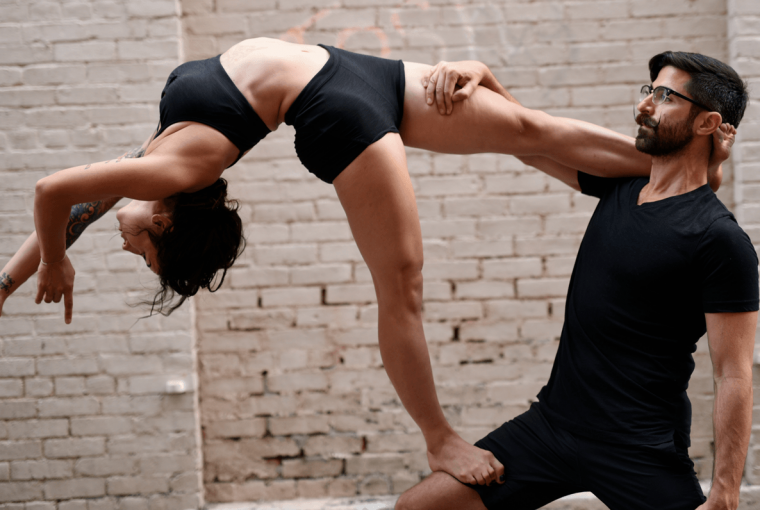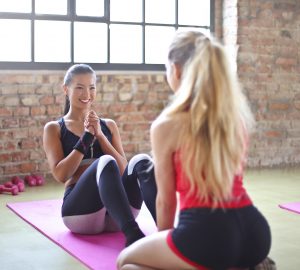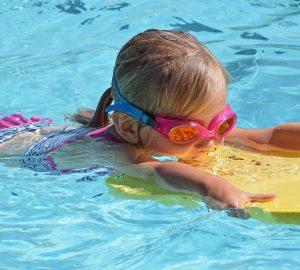Tired of your same-old Vinyasa? It might be time to mix up your yoga routine. A new kind of partner-based practice called AcroYoga is trending right now. The restorative yoga practice combines yoga and acrobatics, using gravity and your own body weight to enhance stretching and strengthening poses.
Most sequences include “therapeutic flying,” in which you play one of two roles: the base, who lies on the mat and supports a partner in the air, or the flyer, who balances on the base’s legs. The practice can also include Thai massage, which involves assisted stretches, and some kneading.
AcroYoga can strengthen the base’s legs and release tension in the flyer’s body, particularly in the back. Certain poses can also build muscle, says Jason Nemer, cofounder of AcroYoga. But the practice doesn’t just benefit your body. Working with a partner to lift one of you into the air helps you learn a lot about your fears and limitations—and how to move past them, says Nemer. What’s more, AcroYoga is more social than solo practice and can help you build trust, especially with your partner.
Acrobatics not quite your thing? You can still try AcroYoga. “I’ve seen people again and again re-think their ideas of what they are capable of,” says Nemer. Of course, the safest way to get started is with a certified teacher who can help ensure you’re doing the poses properly.
No classes near you? Try this two-pose beginners’ sequence at home with a partner (it’s best to start off with another woman so you can support each other’s weight) and a spotter.
Pose 1: The Front Bird –This is similar to the airplane game you probably played as a kid. It strengthens the flyer’s back and the base’s legs.
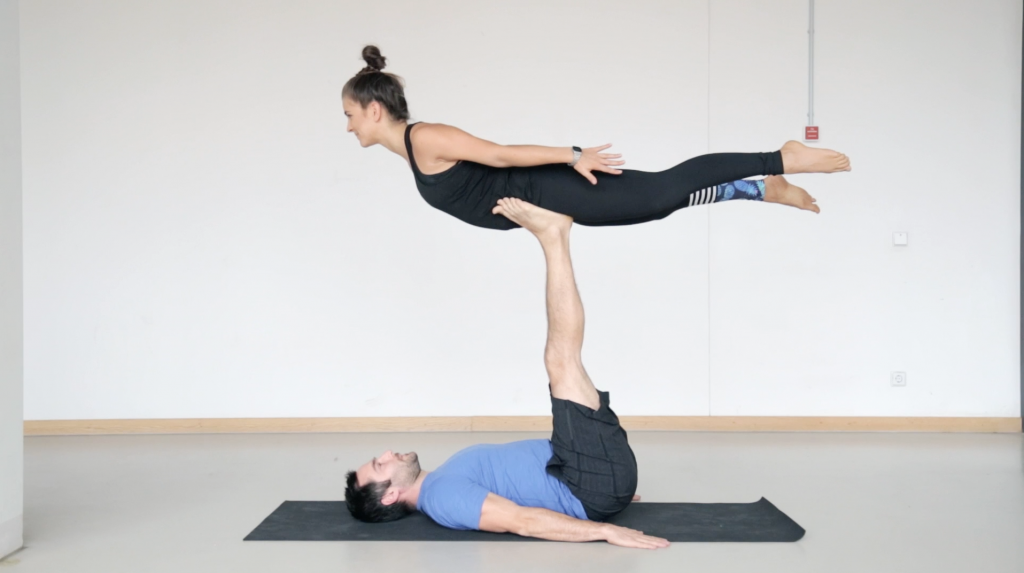
Start as the base: Lie on your back with your legs parallel to each other. Bend your knees so your upper legs are perpendicular to the floor and your lower legs are lifted at about a 45-degree angle to the floor. Ask your partner to walk toward you, and place your heels on the top of her thighs so your toes just touch her lower belly. You should now be cradling her hipbones with the arches of your foot.
Take the flyer’s hands, and bend your arms and legs slightly as she leans forward and brings her feet up off the ground. Encourage the flyer to brace her core to create a straight line between the top of her head and her toes. Meanwhile, straighten your arms and legs upward to push the flyer away from the ground. When you both feel comfortable and balanced, slowly lower your hands (but not your feet) and see if your partner can stay balanced on just your feet (this is where having a spotter is especially helpful). Stay in this position for up to 30 seconds, and then slowly lower your partner to the ground.
Pose 2: The Folded Leaf –This therapeutic pose gives the flyer a gentle spine stretch.
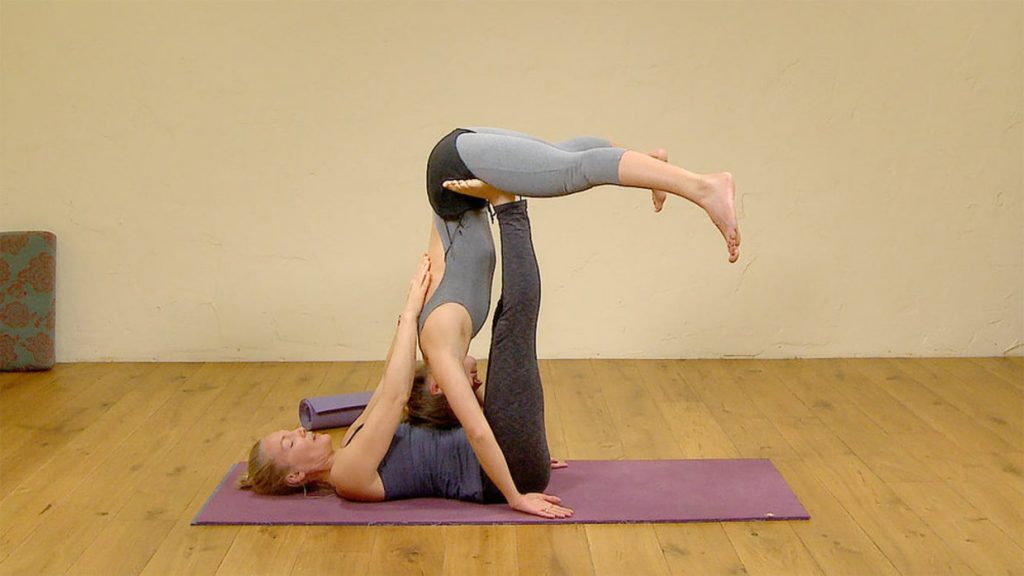
From the starting portion of Front Bird pose, turn your feet outward so the flyer’s hipbones hit the inside edges of your feet. Ask her to fold forward so that the crown of her head brushes your belly and her feet lift off the floor. After holding the pose for 30 seconds (or as long as you both feel comfortable), hold the flyer’s hands and help her come up from the forward fold. Then, begin to soften your knees and slowly lower your legs toward the floor until the flyer’s feet touch the ground to come out of the pose. Release your hands.
After you’ve tried both poses, switch positions and repeat the sequence as the flyer.

